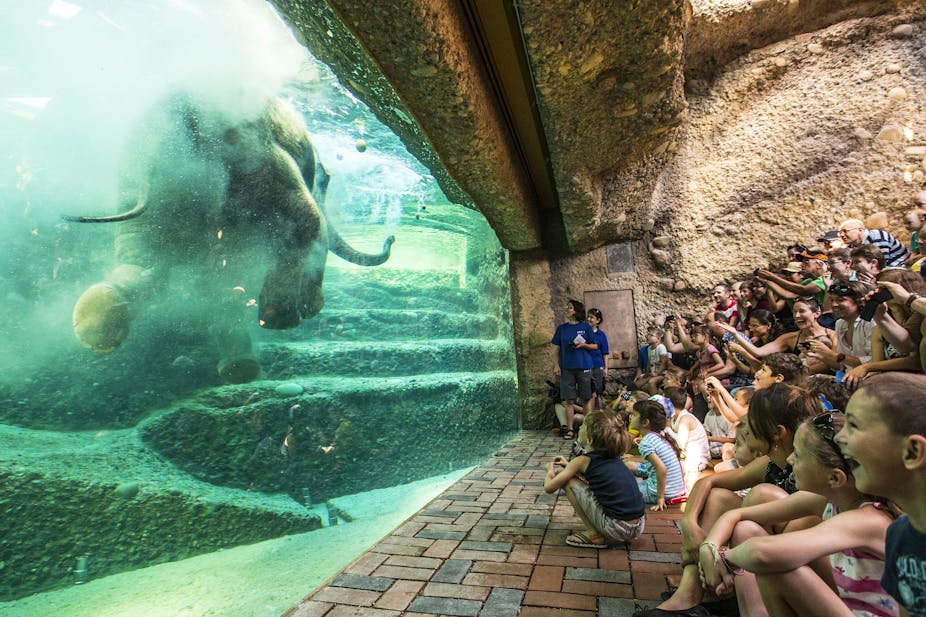Ever had one too many at the zoo and thrown your beer at a tiger, or stripped off and attempted to jump into the penguin pool? I’d hope not, but these are just two examples of inappropriate behaviour by visitors at London Zoo’s controversial party nights.
We all know how alcohol causes people do silly things and temporarily lose control. In a zoo we are there to observe, learn and enjoy – not to interact with the animals and certainly not to bother them. At their best, zoos are a wonderful form of theatre; at their worst, a grotesque pantomime, featuring unwilling animal actors.
Theatres and zoos survive in the days of cinema and wildlife documentaries because they provide a more personal experience. In a world where people share their life through social media a visit to the zoo provides them with something that their friends can experience, without being the cloned experience of watching a wildlife documentary.
Unfortunately, we have all heard a cell phone ringing in a theatre, thereby breaking the suspension of reality. But should zoo visitors be passive observers? If you follow the school of immersive zoo design, where the visitor is transported through enclosure design to the tropical rainforest of Africa, then a cell phone going off is going to ruin that experience. In my experience there is never a signal in such remote places.
Talking during a performance has always been a big no-no in theatres. But in zoos, talking at normal volume is not a problem; however, I personally find it extremely uncomfortable when people start to shout at zoo enclosures. And the animals, how do they feel? Before answering this question we should look at why people shout at animals in zoos.
Many zoo animals are nocturnal and so we are visiting them at their least active time of day. And a number of popular species such as lions are naturally very inactive. For every gazelle hunt worthy of a BBC Nature special there are many, many hours of lazing around. Of course this isn’t what zoo visitors have paid their money for – they want to see active animals.
In some of my recent research we showed that a number of zoo species become more active when the public is noisy. Chimpanzees start to roam around their enclosure, for example. And there may be positive feedback at work here; that is, loud visitors provoke higher levels of animal activity, which in turn causes the humans to shout or flash their cameras, which disturbs the animals further, and so on.
Undoubtedly zoo visitors affect animal behaviour and well-being. Studies show, in general, that non-agitated and quiet groups of visitors do not appear to stress animals, whereas large, agitated crowds cause all kinds of unwanted changes. Animals can become more aggressive, less sociable or more vigilant (an indication they feel less secure).
Our research has shown that zoo visitors increase noise levels on average by more than 10 decibels; that is, they double sound noise levels (decibels are measured on a logarithmic scale). If you have even been in a noisy bar you know one consequence of people talking loudly is you need to talk louder yourself to be heard (what is known as the Lombard Effect).
Many species naturally depend on their hearing to know when to feed their young or when a predator is nearby. Thus, being deprived of this sense is stressful.
So what can be done about loud zoo visitors? Simply asking people with signs to be quiet is not usually effective.
Library zoo
When I worked at Edinburgh Zoo in the 1990s, we deliberately made the visitor areas dark. People in spaces with reduced lighting generally talk more quietly and are less agitated – think of libraries. But zoos should not be libraries – but they should be places of learning. I think a good zoo should encourage people to discuss what they are seeing.
Some zoos have human attendants at the enclosures to control public behaviour but this seems rather draconian. There must be better solution and of course environmental education can help to a certain extent. But the education message can go too far: many zoo visitors now feel that must say they visit a zoo for conservation purposes. Ironically, the elephant in the room at the zoo is to say you are there for a good day out. Despite the fact that people enjoying themselves will learn more about conservation.
We can of course provide zoo animals with enclosures that are acoustically isolated from the public. But I feel this would deprive the public of the great sensory experiences of zoos: their sounds and smells. The deafening duets of gibbons and the foul smell of maned wolf faeces have stayed in my memory from my first zoo visits more than 40 years ago.
Good zoos take the visitor experience very seriously and the welfare of their animals even more so. The challenge is to make zoos a pleasant experience for both animals and people – a happy medium that lets us enjoy and appreciate a zoo’s inhabitants, without causing adverse stress levels.

